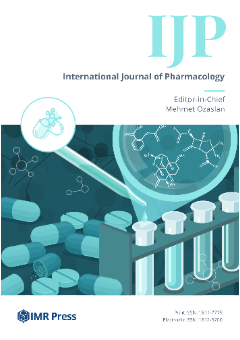International Journal of Pharmacology (IJP) is published by IMR Press from Volume 21 Issue 4 (2025). Previous articles were published by another publisher under the CC-BY licence, and they are hosted by IMR Press on imrpress.com as a courtesy and upon agreement.
Portal Fibroblast Role in Liver Fibrosis in Rats
Background and Objective: Liver fibrosis is a significant health problem developed as a response to a wound-healing process in injured liver characterized by excessive deposition of fibers and extracellular matrix (ECM). This study aimed to clarify the ultra-structural events that govern the ECM deposition and fibrosis progression using dimethylnitrosamine (DMN) induced liver fibrosis in rat's model. Materials and Methods: Two groups of male rats were assigned, control and DMN. To induce liver fibrosis, rats were administered DMN intraperitoneally (10 mg kg–1, 3 days/week for 21 days). Statistical analysis of animal weights was performed by one-way analysis of variance (ANOVA) and liver tissue was processed for electron microscopy examination. Results: Administration of DMN induced significant body weight loss and severe pathological alterations. The hepatocytes went through apoptosis, the sinusoidal endothelial cells lost their fenestrae and the quiescent hepatic stellate cells (HSCs) were activated, they lost their retinoid, acquired large nucleus and attained large amount of fibers. In other words, HSCs were transformed into myofibroblasts (MFs) phenotype which synthesized ECM proteins and produced fibrous scar. Furthermore, portal fibroblast (PFs) proliferated and produced large amount of fibers in portal and periportal area. Lymphocytic infiltration, necrosis and cholangiocyte proliferation were contributed to liver fibrosis in this study. The most distinctive features of the cellular events of hepatic fibrosis in this study were extensive deposition of ECM and collagens, primarily in portal and periportal areas as well as massive fibrous appearance of the mitochondria of the hepatocytes. Conclusion: Activated portal fibroblasts contributed highly to fibrosis in this study.

